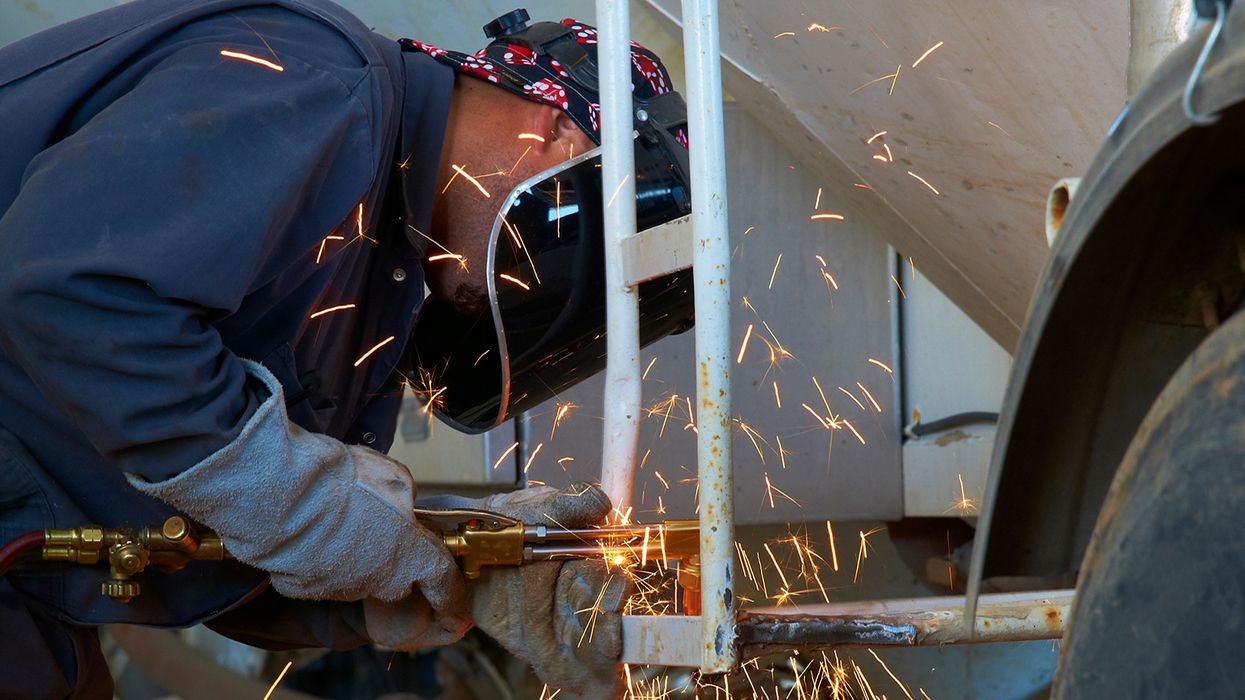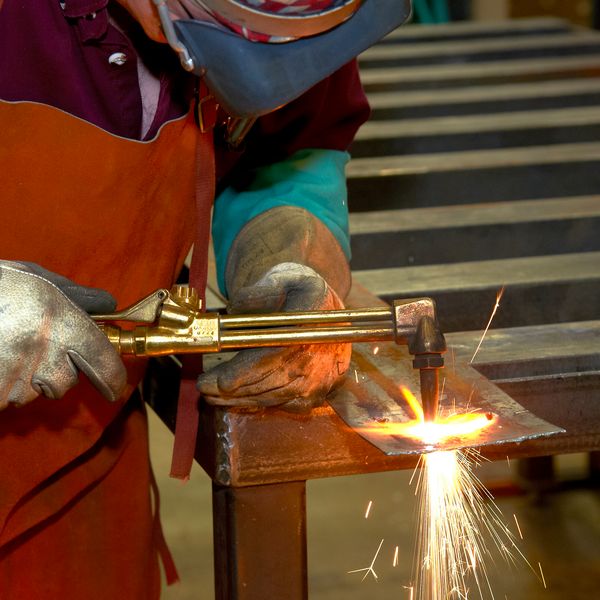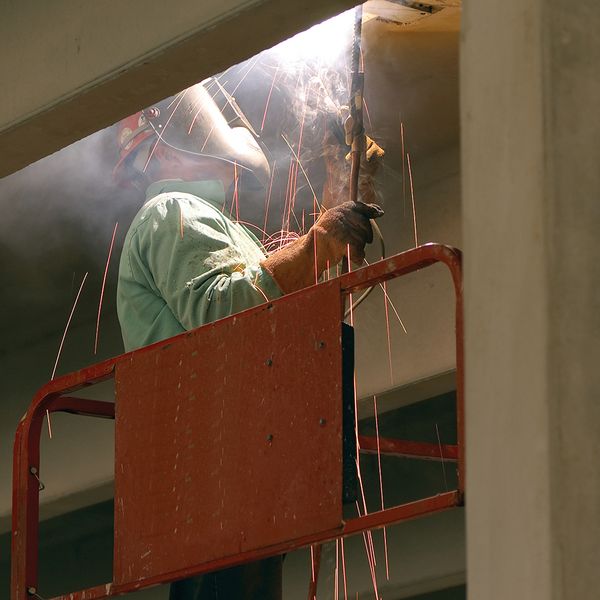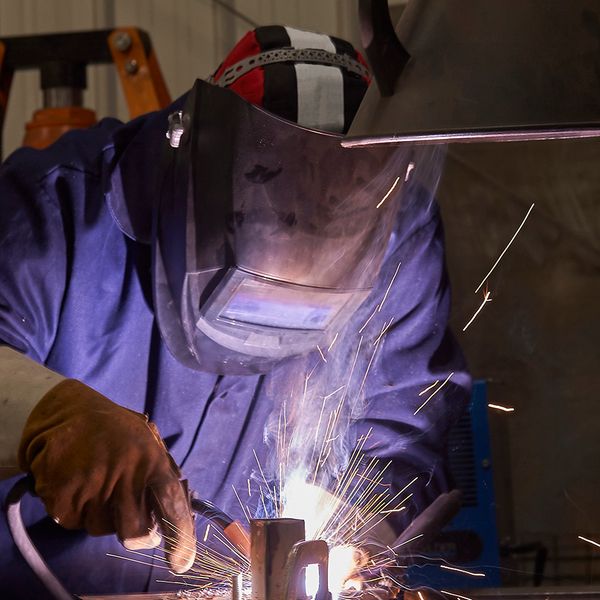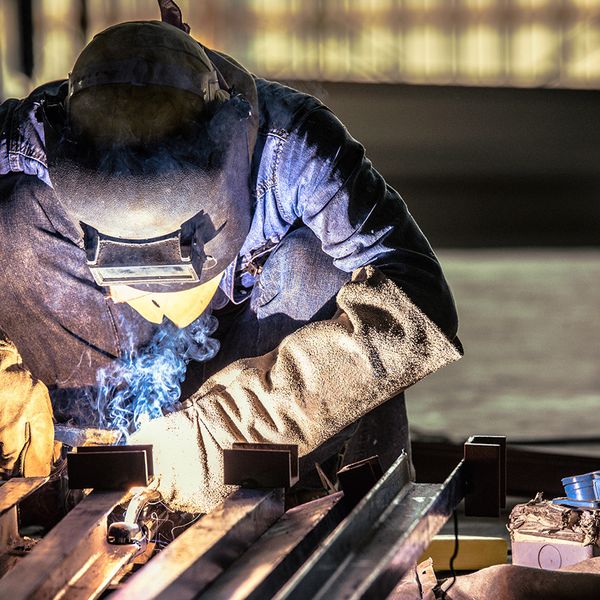Don’t take short cuts when welding
Workers should always follow established safety procedures and resist the temptation to take short cuts. This is especially true when welding jobs are considered routine.
Welding can be a common procedure in some industries. There’s always something that needs to be repaired, constructed, or taken down. You might have a single portable welding unit to do an occasional spot-welding task, or you may have large electric welders to use in daily production.
Welding and metal cutting operations produce molten metal, sparks, weld spatter, slag, and hot work surfaces. All of these can create a situation which can cause a fire — either immediately or after a period of time.
Welding, cutting, and heating are only permitted in a designated, safe area or after all fire hazards have been removed or protected. A hot work permit is also required. Failing to follow the rules can result in this scenario occurring.
It happened like this
Jason needed to do some welding on a piece of pipe. He got the required hot work permit and had it signed, but no one inspected the area first.
Melissa, the designated fire watcher, was a little late. Jason decided not to wait for her. He had a lot to get done that day, and he was hoping to leave work a little early. Jason cleared the area around the pipe of all combustible materials for about 10 feet. He figured that would give him more than enough room to weld safely.
What he didn’t know was that 20 feet away there was a barrel of flammable material. On top of it was a stack of invoices that were left there by accident. In addition, there were several wall openings nearby.
Jason started to weld the pipe, with his back to the barrel of flammable material. Sparks flew and several landed on the invoices which were on top of the barrel. It didn’t take long before the invoices started to smolder and then catch fire.
Luckily, a short while later Melissa arrived, saw the fire, and put it out with her fire extinguisher.
Also, sparks and slag had been bouncing and flying through the nearest wall opening. Neither Jason nor Melissa knew what was going on in that area.
What did Jason do right?
- Obtained a hot work permit.
- Moved the combustible materials.
What did Melissa do right?
- Noticed the fire.
- Extinguished the flames.
What did Jason do wrong?
- Didn’t wait for Melissa to arrive.
- Didn’t check the area more thoroughly before starting work.
What did the permit authorizing individual do wrong?
- Didn’t inspect the area prior to issuing the hot work permit.
- Didn’t identify site-specific flammable materials, fire hazards, or hazardous processes present or likely to be present.
- Didn’t ensure the protection of combustibles from ignition by the hot work process.
What do you think should happen next?
- Melissa should see if the sparks have ignited anything in the other room.
- Melissa will have to file an incident report.
- The workplace hot work permit process should be reviewed.
- Jason should be disciplined.
- Jason should be given additional training on work practices, welding hazards, and fire prevention in welding operations.
Key to remember
Remember these precautions for handling fire hazards when welding:
- If an object can’t be moved, then all fire hazards must be moved at least 35 feet away or the object must be protected in place.
- If an object can’t be moved, and normal fire prevention precautions are not sufficient, then additional personnel must be assigned to guard against the fire, both during the time of the work and for a time afterward.
- Protect flammable walls, floors, and ceilings, and the spaces in between with fire-resistant covers.

